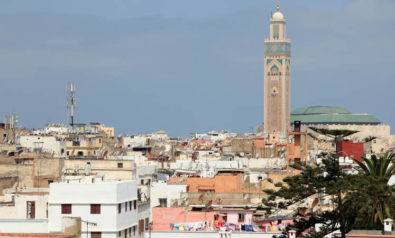Despite improvements in rates of inequality, almost half of the world’s wealth is still owned by 1% of the population.
Since 1990, global poverty has halved, going down from 43% of the world population subsisting on less than $1 a day to 21% in 2010. According to UNESCO, the number of children not enrolled in school is down from 101 million in 2000 to 57 million in 2011. The absolute gap in life expectancy between wealthy and low-income regions has shrunk from 23 years in the 1950s to under ten years in the last decade — with the exception of sub-Saharan Africa where it still lingers at 16 years. But the world is far from a fair, harmonious place.
According to the UN Report on the World Social Situation, inequality in disposable income increased in 65 out of 130 countries between 1990 and 2012, which affected two-thirds of the world population. In 2010, high-income countries, which house 16% of the worldwide population, generated 55% of global income, while low-income countries are home to over 70% of global population.
Gross domestic product (GDP) in sub-Saharan Africa is still only just above $2,000, compared to $27,640 in the European Union and $41,399 in the United States. This means the absolute gap between low- and middle-income countries has more than doubled between 1980 and 2010, from $3,000 to $7,600, with an individual in the bottom 10% in Sweden earning 200 times more than their counterpart in the Democratic Republic of Congo (DRC).
In the US, the top 10% earned more than half of the country’s income in 2012 which, according to The New York Times, is the highest in a century. According to the Credit Suisse Global Wealth Databook, almost 75% of wealth in America is owned by the top 10% — an increase from 67.2% in 1989 — while the rest of the 90% saw their wealth decline in the same period.
There are 3.5 million children living in poverty in Britain — almost 27% — with 9% of these, a staggering 74,000, going to bed hungry in London alone, as a report by the city authority found. This is despite the fact that London now has the world’s highest number of billionaires in the world.
The Arab Spring, the rage of the Occupy Movement, the devastating conflict in the DRC, and the European elections that saw right-wing parties emerge victorious are all linked to underlying economic grievances. Both the Great Depression and the Global Economic Crisis were preceded by sharp increases in inequality, creating a debt-driven economic bubble that was bound to burst.
While Russians spent some $900 million on London real estate in 2013 alone, the current median salary for doctors is around $1,300, while teachers earn around $800. Alisher Usmanov, officially Russia’s wealthiest businessman, is worth an estimated $20 billion, and President Vladimir Putin could turn out to be the world’s richest man.
Sporting spectacles like the 2014 FIFA World Cup or the Sochi Olympics brought to the fore not only the difficult economic conditions in the host countries, but the desperate plight of migrant workers across the globe. Many of these workers are completely unprotected from mistreatment and abuse because of their illegal status, of which Qatar was the latest to make headlines.
Inequality is distributed heavily across gender and racial sectors. According to a World Economic Forum report, ten out of 133 surveyed countries closed the gender gap in education and health in 2013, while no country closed the economic participation or political empowerment gaps. In first place, North America has closed 74% of its gender gap, with the Middle East and North Africa left in last place with only 59%. But even more worrying is that Asia and the Pacific, the leader in political equality, stands at a meager 24%.
These dry numbers aside, gender inequality is not only clearly visible, but jarring. The systematic mass rapes in the numerous conflicts across the world, the brutal violence against women in India that goes largely unpunished, female infanticide and genital mutilation — all these indicate how far women are not only from equality, but also basic safety.
Why is Global Inequality Relevant?
Wealth inequality, often paired with conflict, disease and fiscal mismanagement, wrings havoc on socioeconomic structures. The Arab Spring, the rage of the Occupy Movement, the devastating conflict in the DRC, and the European elections that saw right-wing parties emerge victorious are all linked to underlying economic grievances. Both the Great Depression and the Global Economic Crisis were preceded by sharp increases in inequality, creating a debt-driven economic bubble that was bound to burst.
Some have argued that a degree of inequality is constructive: that it stimulates accumulation of capital and competition, as more equal distribution, such as in the former Soviet Union, brings stagnation and lack of ambition.
Yet from a humanist side, it is difficult to accept that argument. When you see someone unable to afford HIV/AIDS antiretroviral drugs, when young girls are forced to marry because their parents cannot afford a nominal school tuition fee, and when African migrants drown off the coast of Italy in search of a better life, it is impossible not to wish that the world was a fairer place for all of us.
The views expressed in this article are the author’s own and do not necessarily reflect Fair Observer’s editorial policy.
For more than 10 years, Fair Observer has been free, fair and independent. No billionaire owns us, no advertisers control us. We are a reader-supported nonprofit. Unlike many other publications, we keep our content free for readers regardless of where they live or whether they can afford to pay. We have no paywalls and no ads.
In the post-truth era of fake news, echo chambers and filter bubbles, we publish a plurality of perspectives from around the world. Anyone can publish with us, but everyone goes through a rigorous editorial process. So, you get fact-checked, well-reasoned content instead of noise.
We publish 2,500+ voices from 90+ countries. We also conduct education and training programs on subjects ranging from digital media and journalism to writing and critical thinking. This doesn’t come cheap. Servers, editors, trainers and web developers cost money.
Please consider supporting us on a regular basis as a recurring donor or a sustaining member.
Support Fair Observer
We rely on your support for our independence, diversity and quality.
Will you support FO’s journalism?
We rely on your support for our independence, diversity and quality.








